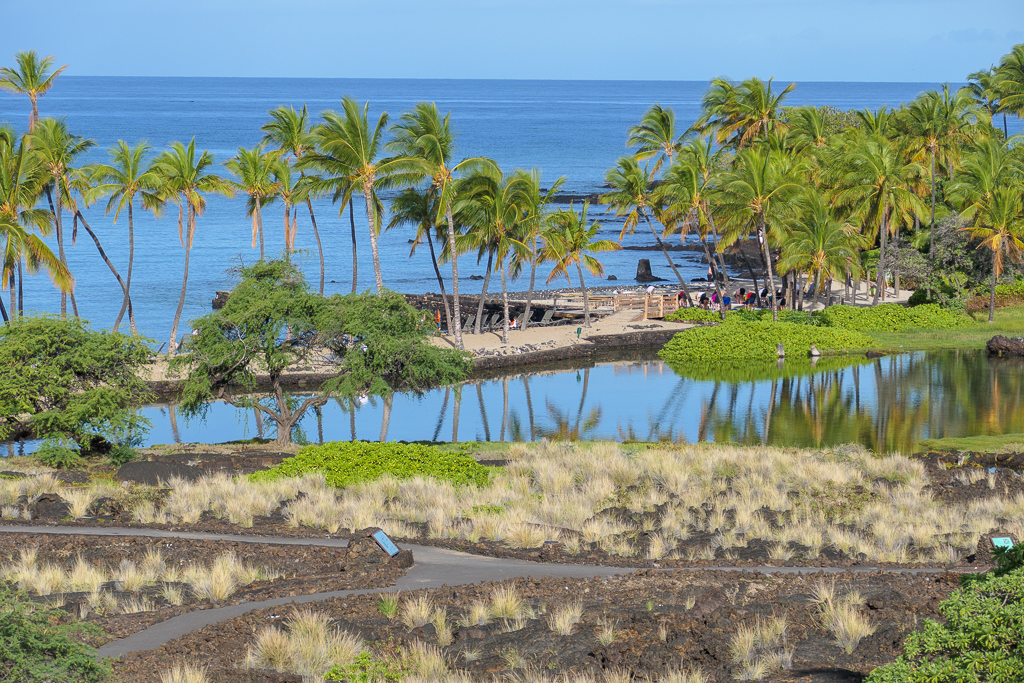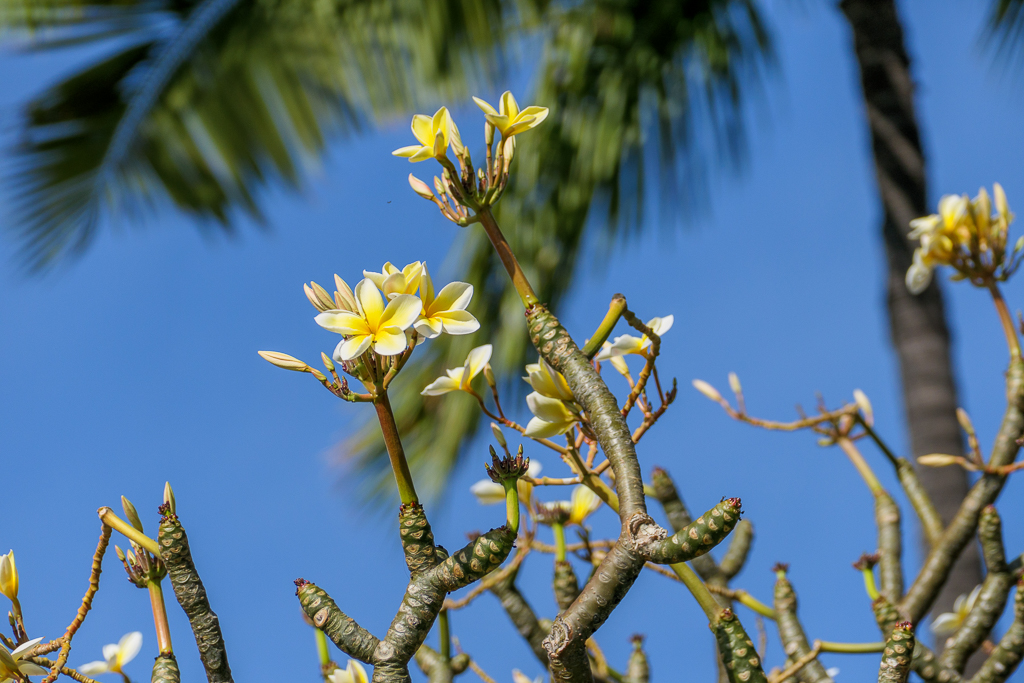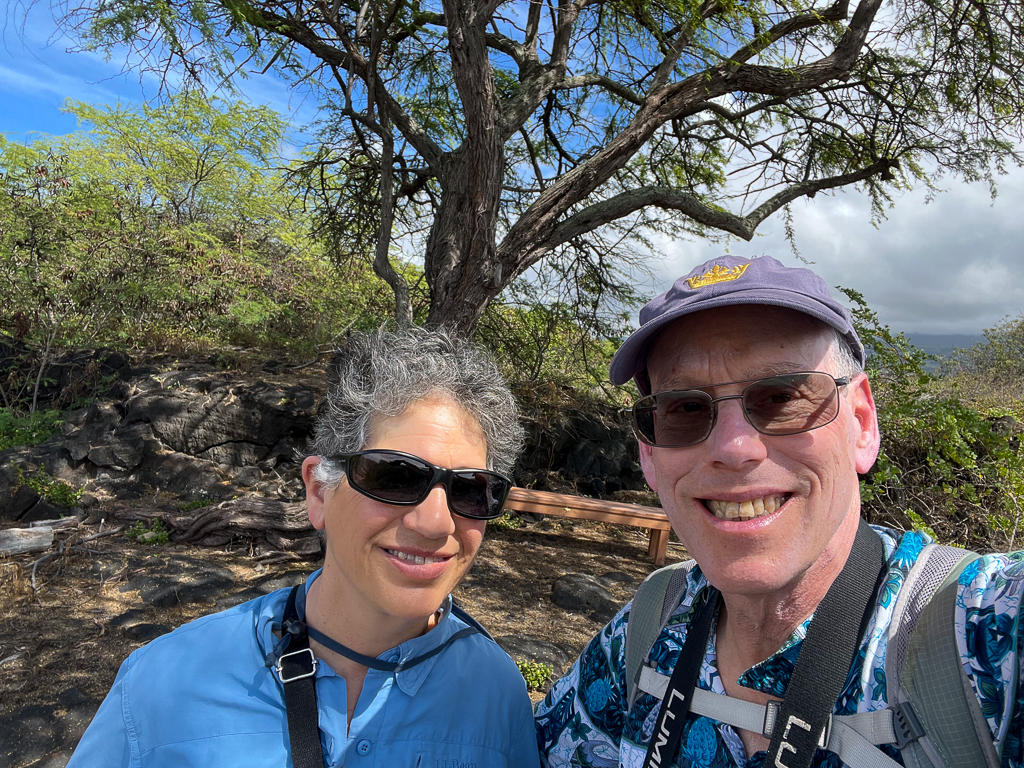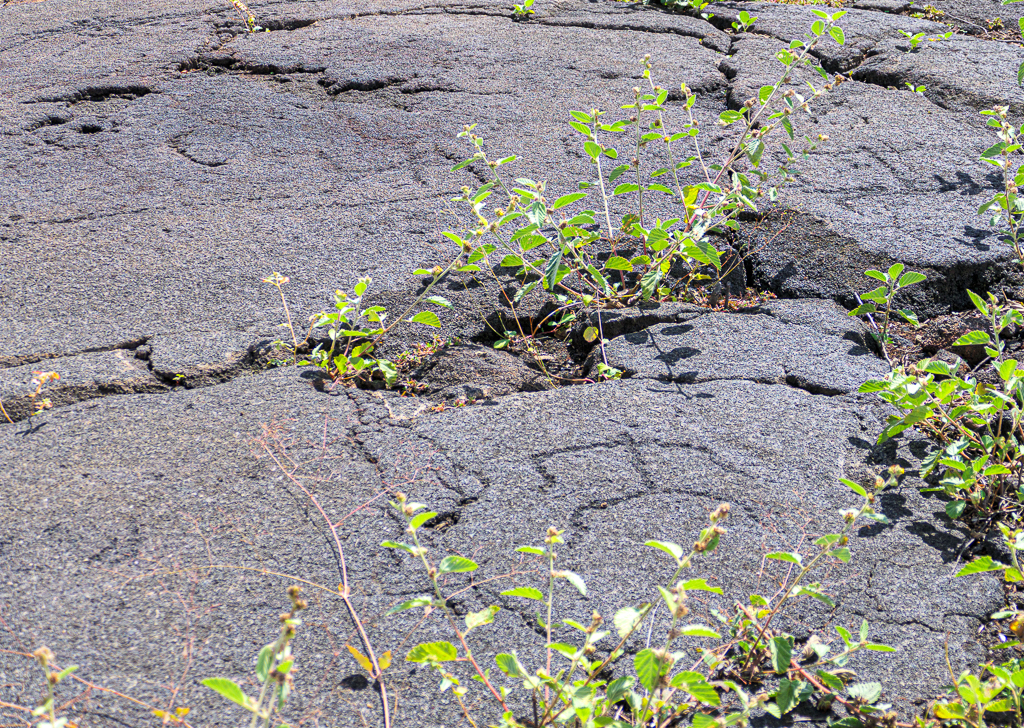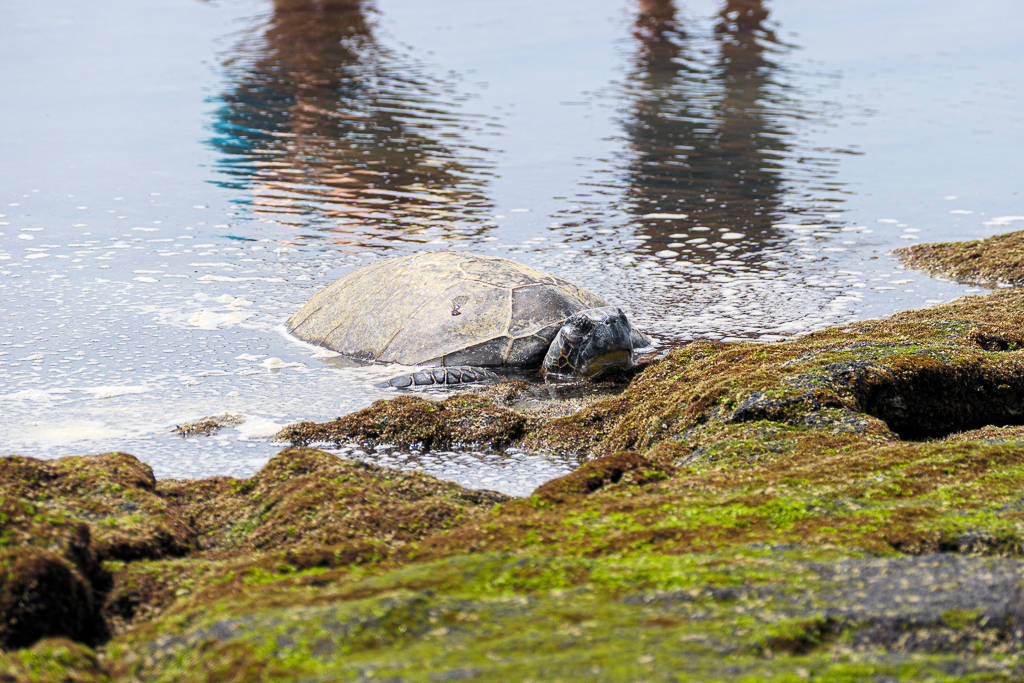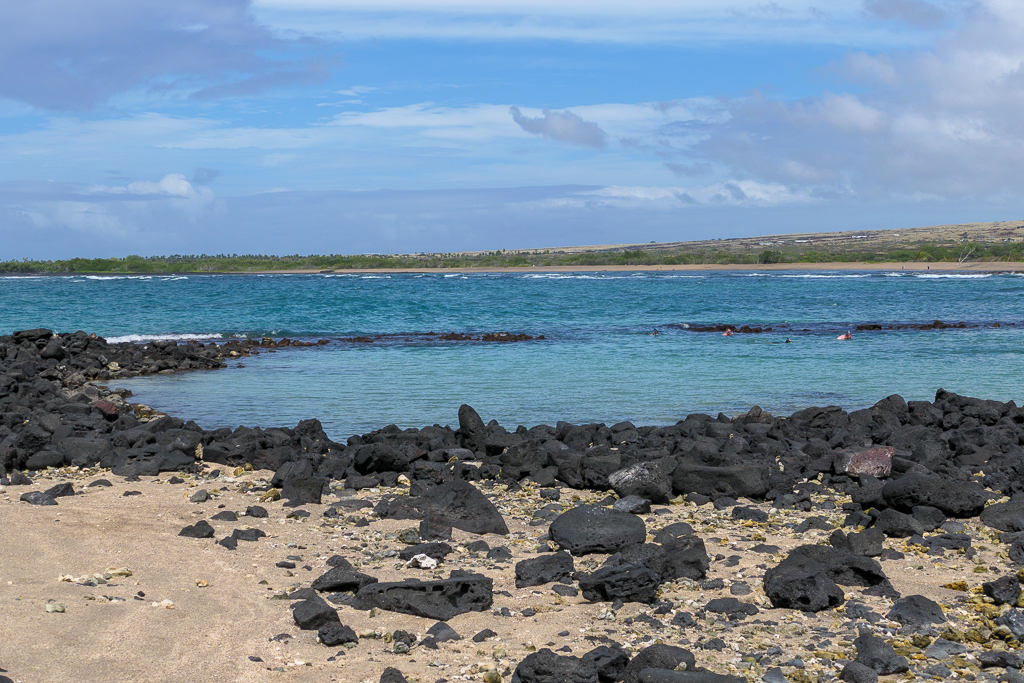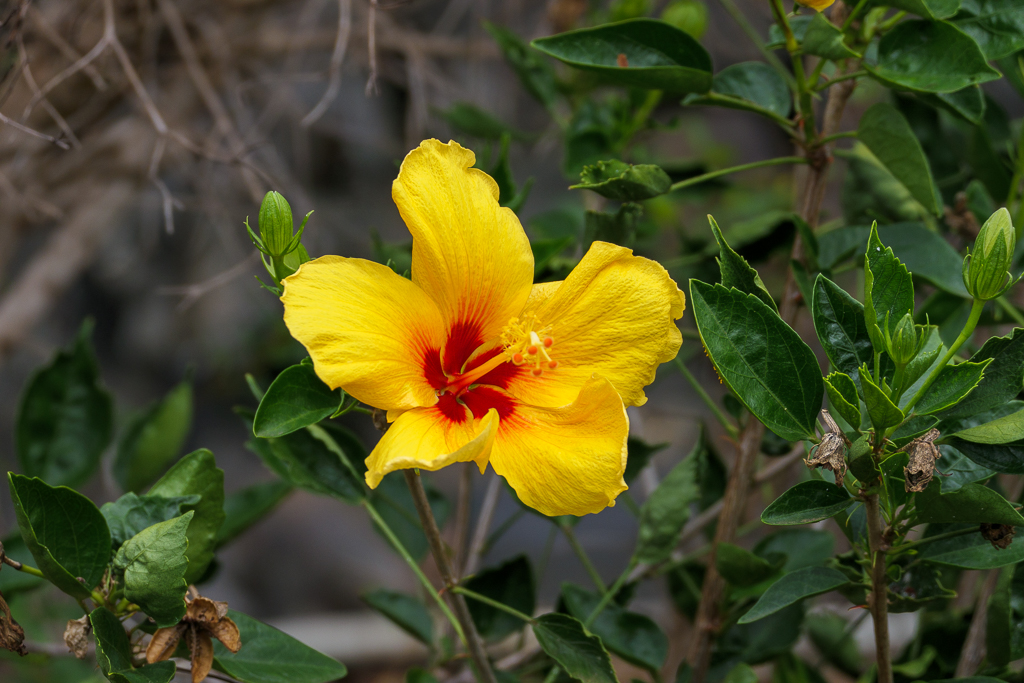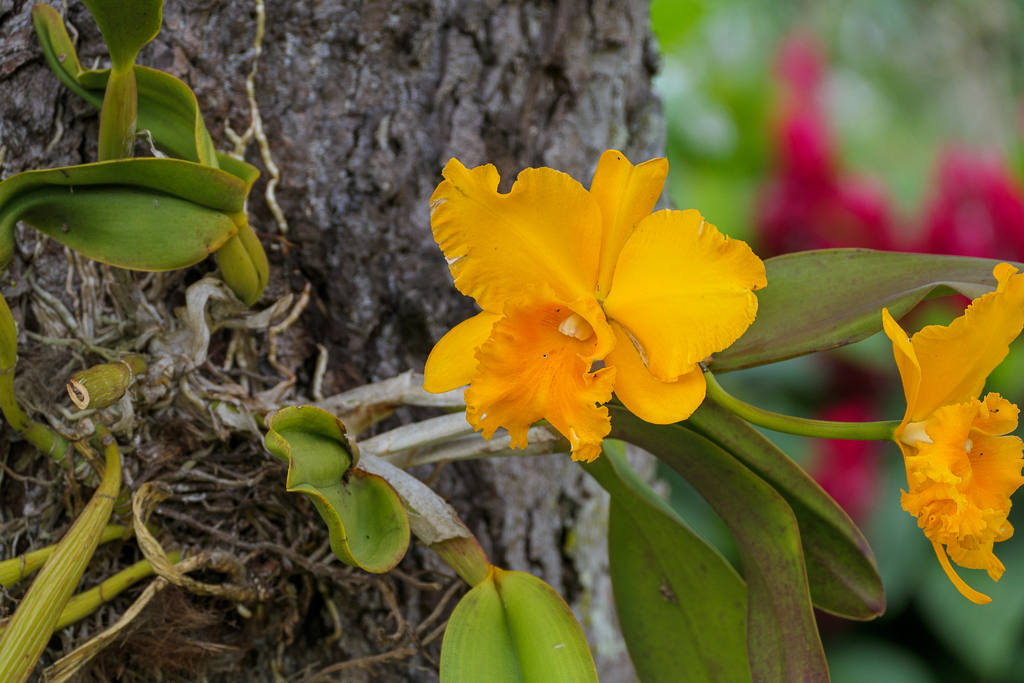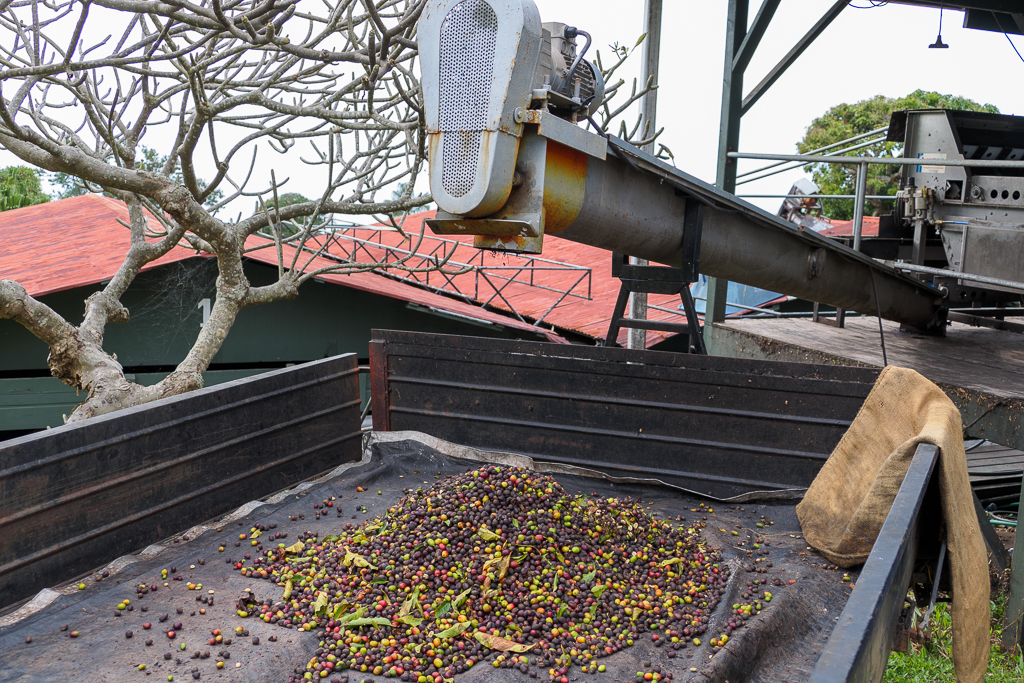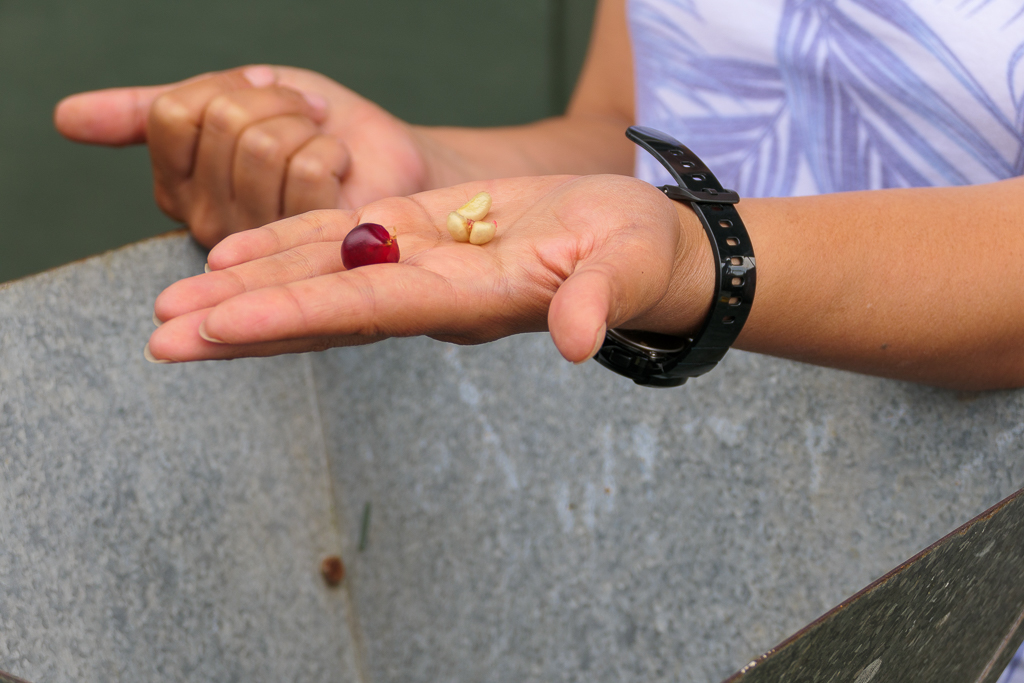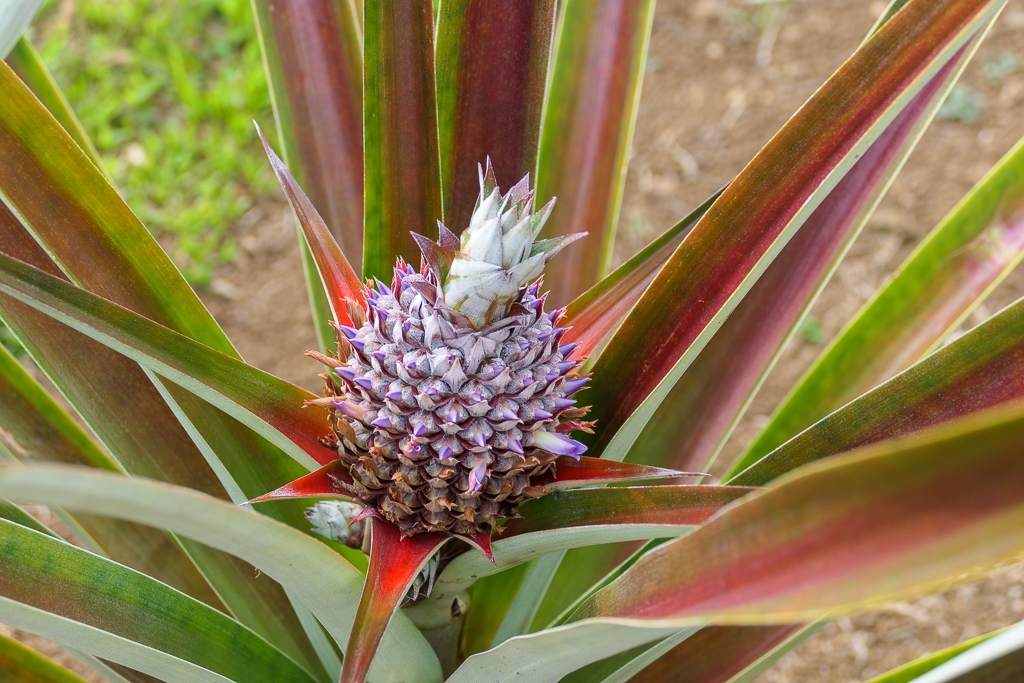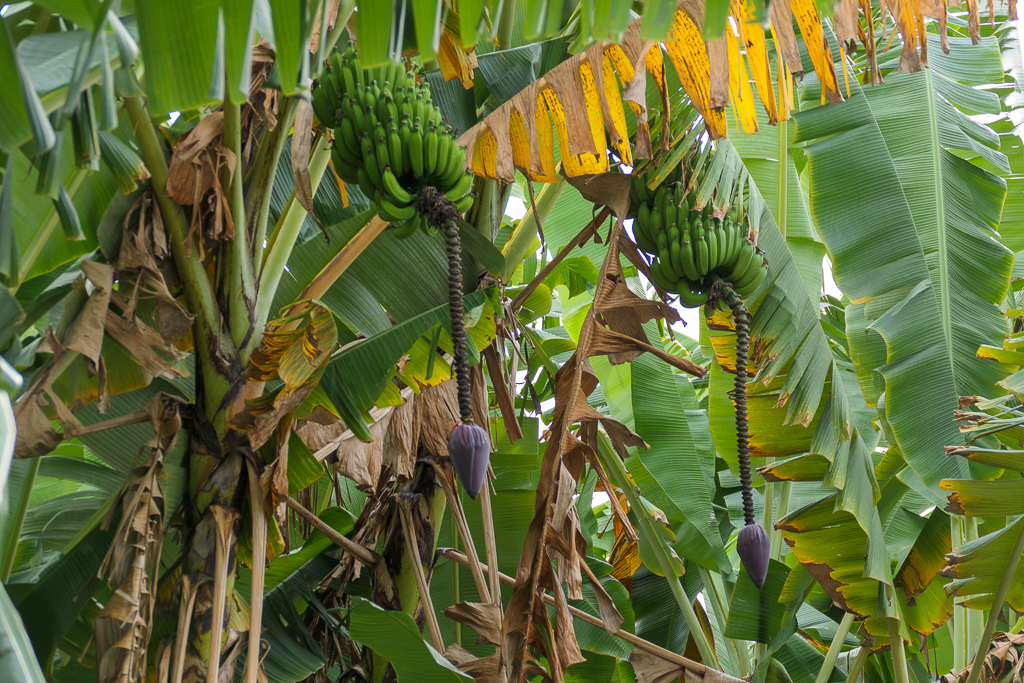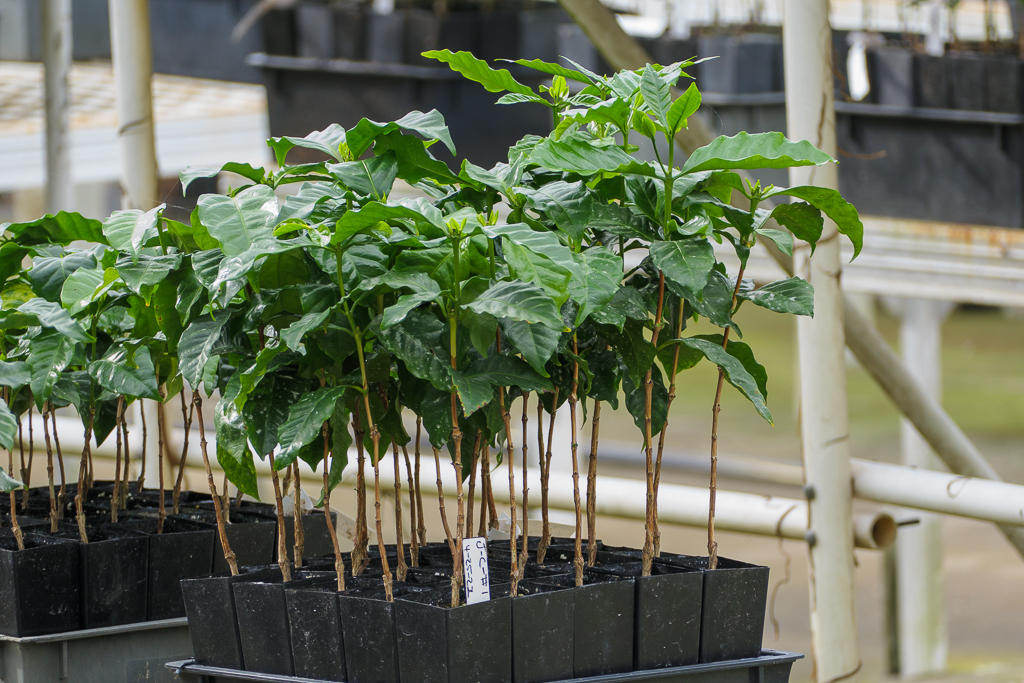We visited Hawai’i Volcanoes National Park today; it’s about a two-hour drive from our hotel. Well, more like three hours when you add stops for lunch, gasoline, and other necessities of life, so we got to the Visitor Station about 1:30pm. It was raining with occasional breaks, which would continue throughout our visit to the park.
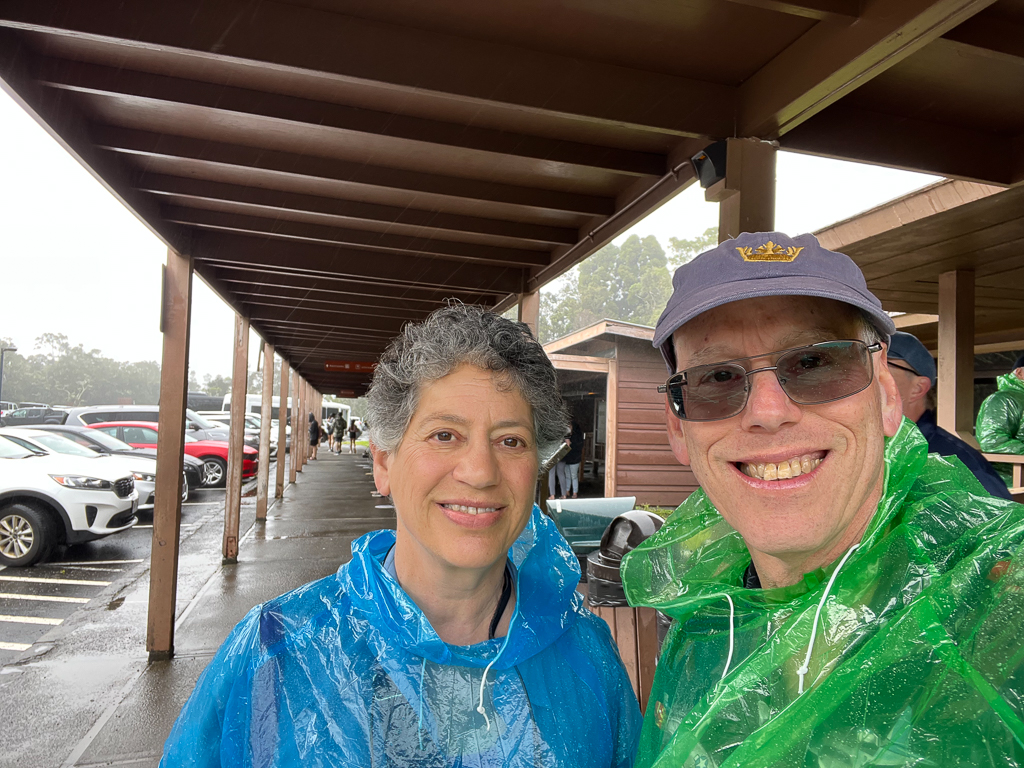
We waited for the 2pm guided walk to the nearby eruption viewing area; it was led by an intern who mostly talked about birds, but we did get our first view of Kilauea crater.
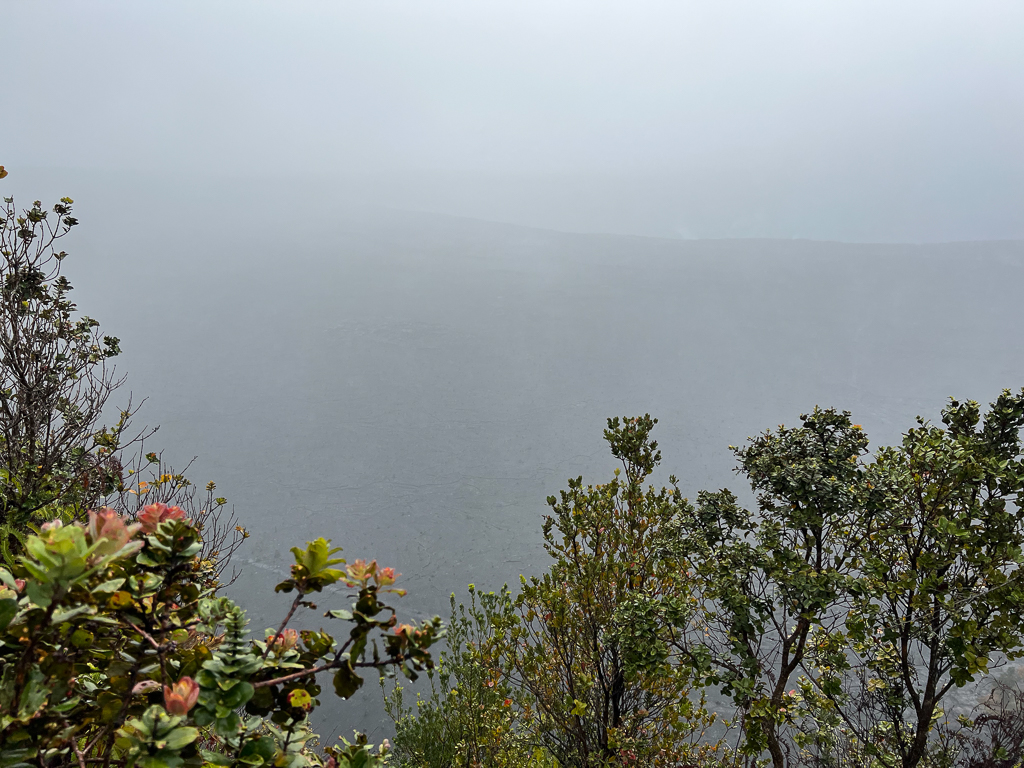
This part of the crater wasn’t affected by the current eruption, though it had been remade by the eruptions a few years ago; plants were already beginning to re-colonize it.
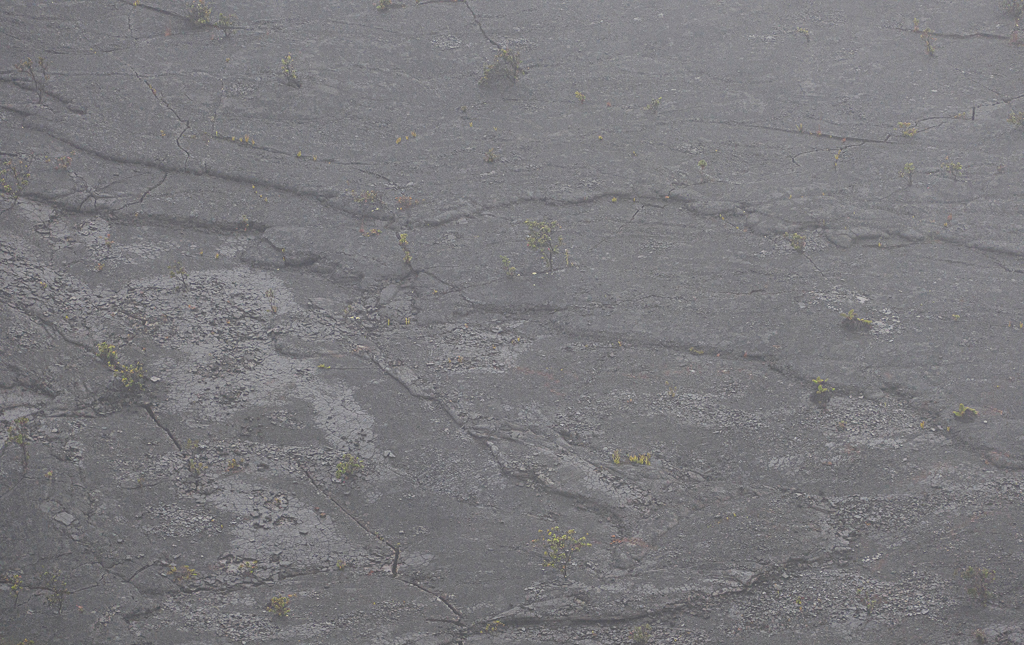
After the walk, we went to Volcano House to look at their gift shop (much more enticing than the one in the Visitor Center, but we managed to leave empty-handed anyway) and take advantage of the crater view there.
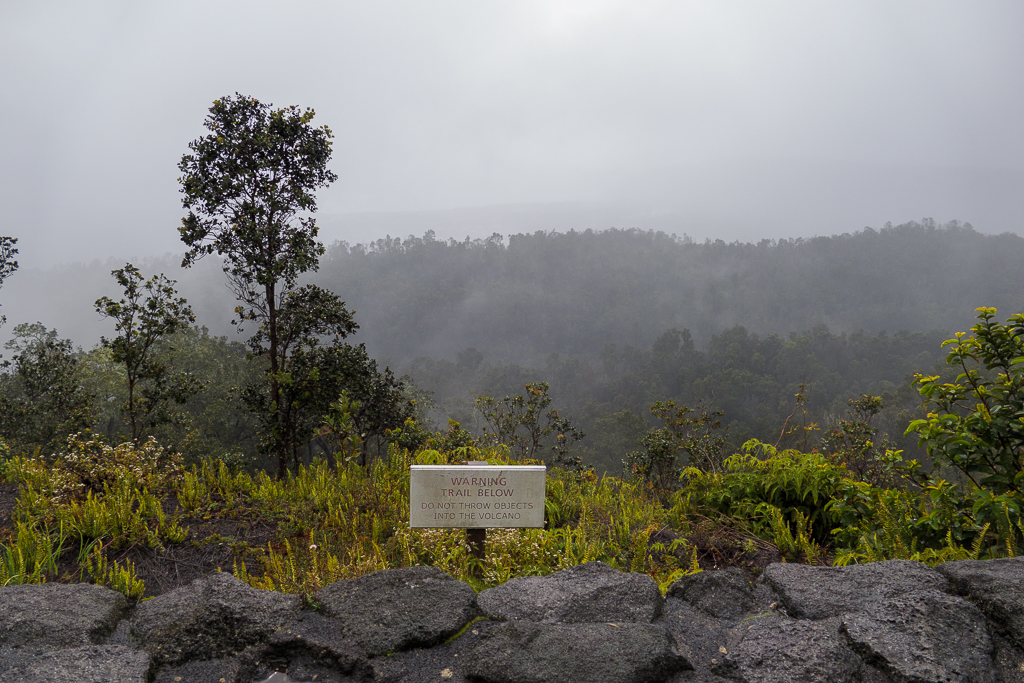
We returned to the car and set out on Crater Rim Drive, westbound. The Kilauea Overlook was our first stop; we enjoyed the warmth of the steam vents and a better view of the crater.
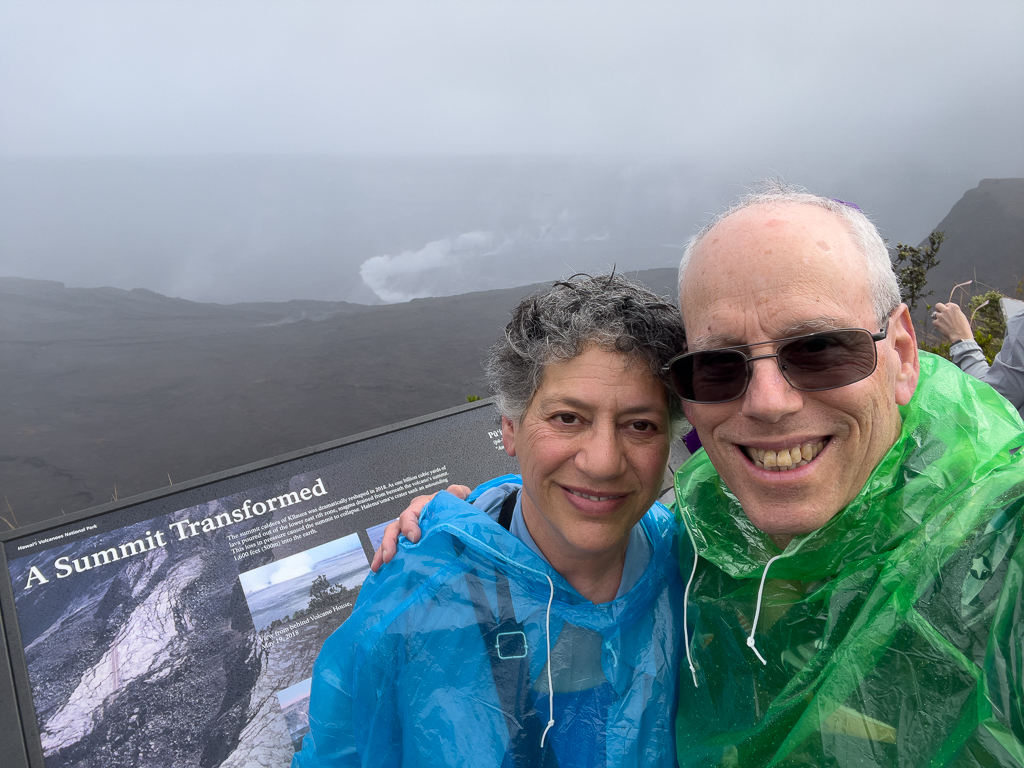
Crater Rim Drive used to go all the way around the crater, but that changed with the 2018 eruptions; we had to turn around and drive the eastern half of the road. We stopped at the Kilauea Ski parking area and walked the trail to the Thurston Lava Tube.
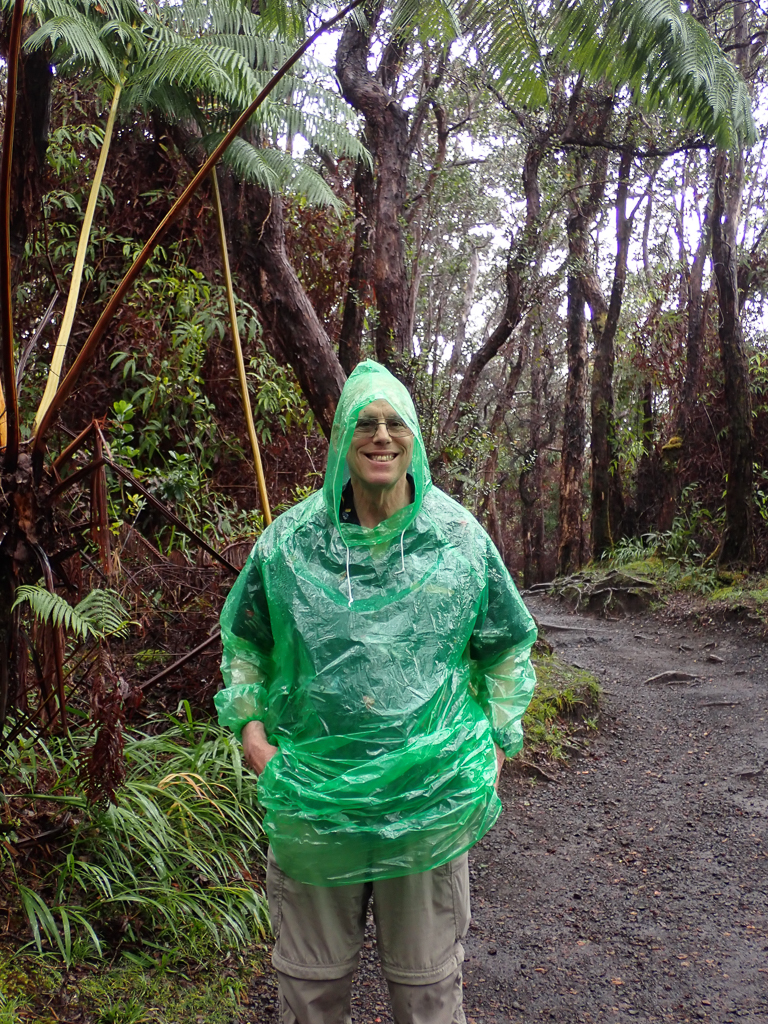
There were lots of holes along the way – we gave them a wide berth.
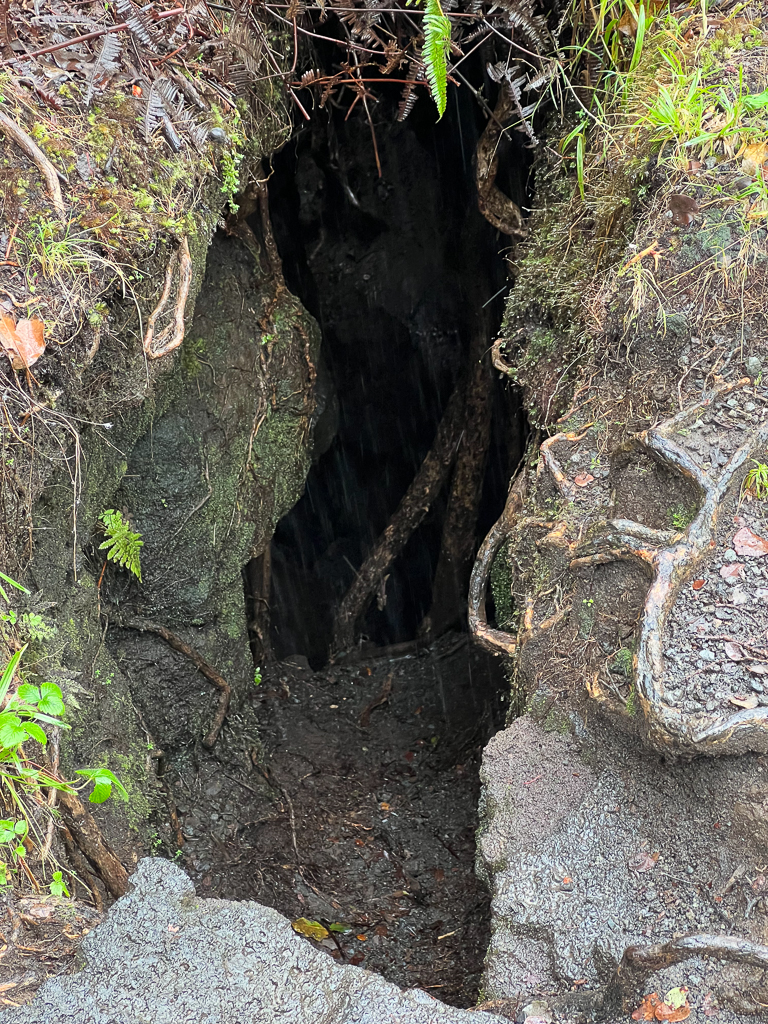
You can go a few hundred yards into the tube, but we had other plans in mind, so we only saw the first twenty feet.
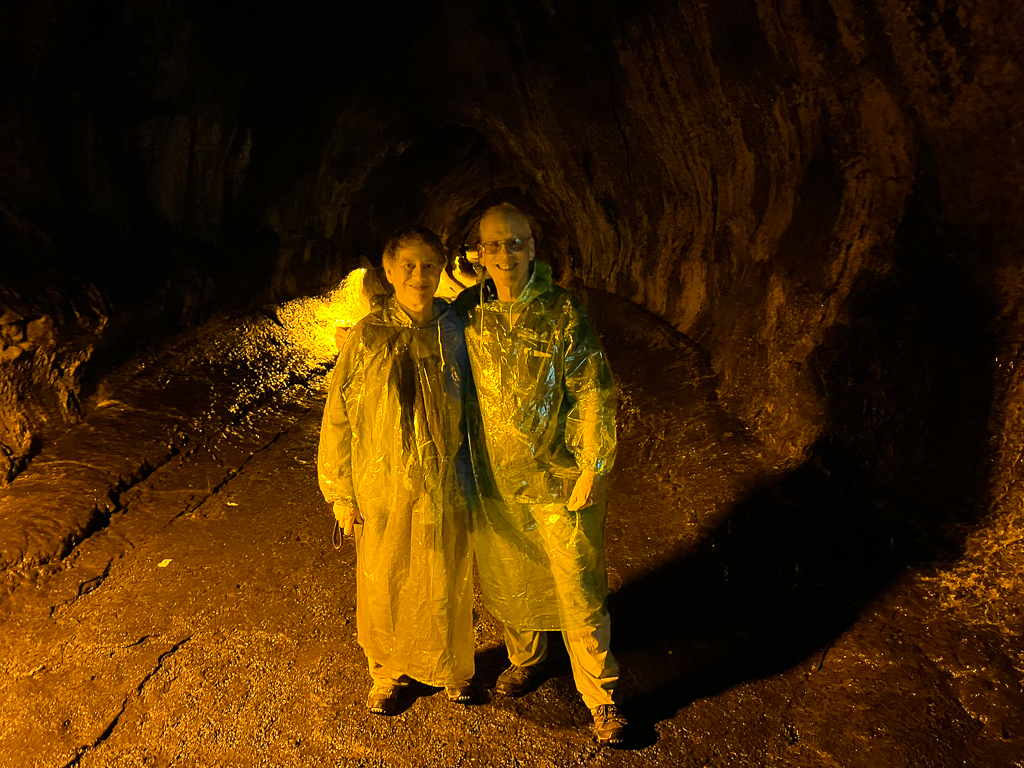
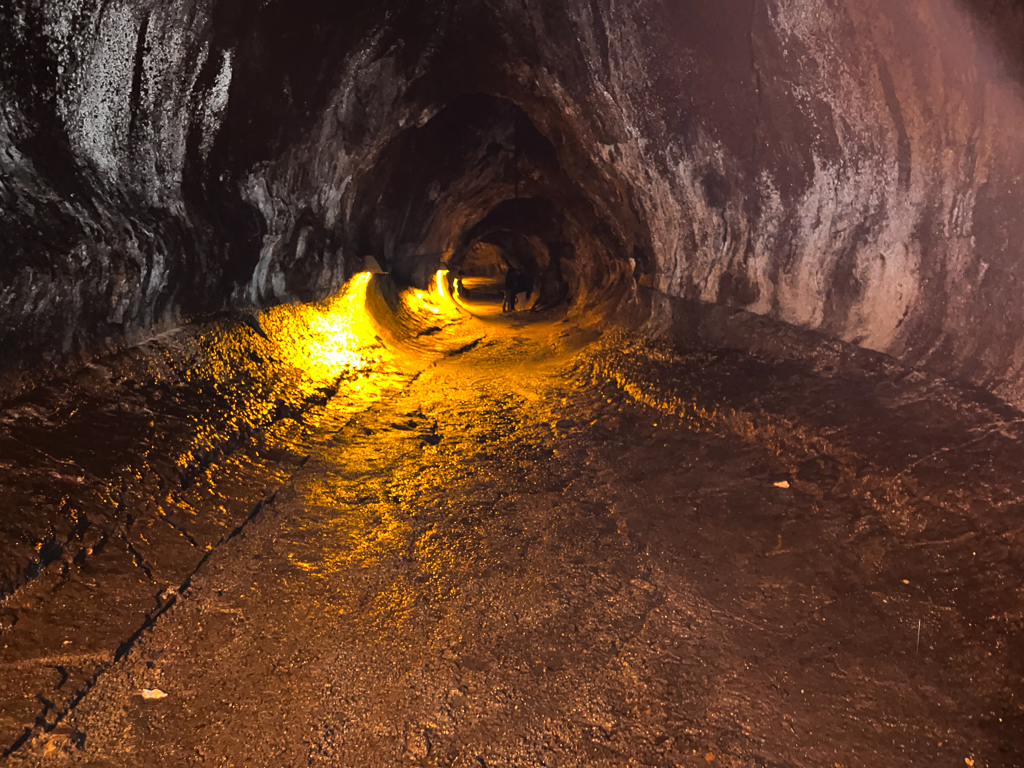
We’d been told that the best viewing of the current eruption in Halemaʻumaʻu crater was from the Old Crater Rim Road (now a trail), so we drove to the parking lot and took the 3/4-mile walk to the viewing area. We saw nene on the lava field next to the trail; it’s their nesting season and there were signs posted reminding you to keep your distance – nene can get aggressive.
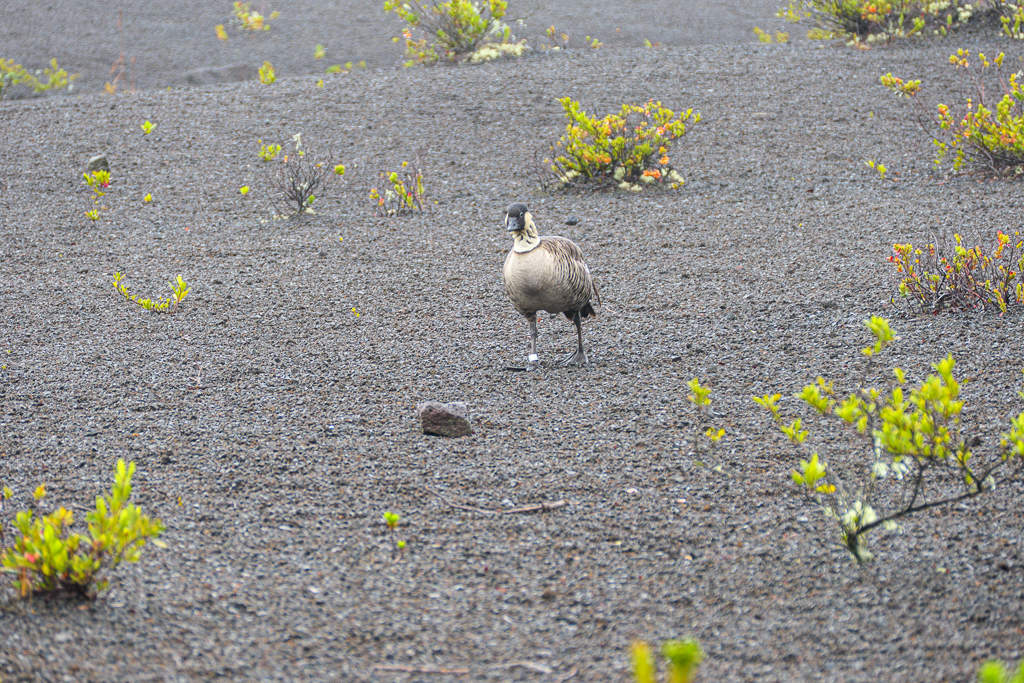
Finally, we reached the viewing area. It was easy to see the plumes of steam from the crater, but we couldn’t see any glowing lava. The photo at the top of the page shows offerings that previous visitors had left for Pele, the volcano goddess – and they seemed to be working, because the eruption had diminished significantly today.
We decided against driving Chain of Craters Road because of the late hour; we headed for our hotel, with a dinner stop at the Dimple Cheek Cafe, where the food was tasty and the portions generous – Diane and I split a salad and an entrée and that filled us up nicely.
It was a long day but well worth the trip; I wish we’d been able to see the lava glowing, but I guess that’s why there’s a webcam!

